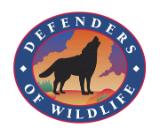Restoring Biodiversity Along the Teton River by Tamara Sperber
In spring 2007 Teton Regional Land Trust began an exciting large-scale restoration project on the Teton River. The Teton River Basin, located within the Greater Yellowstone Ecosystem in southeastern Idaho, is the number one conservation priority for private lands in the 26 million-acre Greater Yellowstone Ecosystem. The Basin contains irreplaceable aquatic, wetland, and riparian habitats that provide refuge for the embattled Yellowstone cutthroat trout, a species now lost from over 60% of its historic range. Rich in bird life, the expansive wetlands along the river corridor are home to many species, including sandhill cranes, trumpeter swans, and the globally-imperiled long-billed curlew.
Private landowners enthusiastic about conservation have recently protected over one mile of the Teton River corridor by placing a portion of their active cattle ranch under conservation easements. Their easements build on other private and state protection efforts in the area, which is now the longest contiguous protected reach of the Teton River. Early on, the landowners expressed interest in improving wildlife habitat for priority species and, upon securing the easements, enrolled in the Environmental Quality Incentive Program (EQIP) through the Natural Resources Conservation Service. Through the EQIP program, Teton Regional Land Trust staff are working with the landowners to restore 2,000 feet of severely impacted streambank. Through a Living Lands Biodiversity Grant, Teton Regional Land Trust was able to hire a nationally recognized restoration expert to help develop a resource inventory and restoration plan while providing mentoring and training on innovative riparian restoration techniques.
Meanwhile, the landowners have been working hard fencing both banks of approximately one mile of the Teton River corridor to exclude cattle and restore riparian vegetation. Together, the land trust and the landowners kicked off their restoration work with a two-day volunteer willow planting event in November. Between now and the Fall of 2008, they plan to plant even more willows and wetland sod, re-contour degraded banks, create floodplain terraces and install large woody debris to ultimately help the river reclaim its historical flow and wetland habitats.
This project has significantly increased the Teton Regional Land Trust’s in-house capacity to complete large-scale restoration efforts through the continuous mentoring and feedback from an expert consultant. In addition, they have ensured the long-term stewardship of essential wildlife habitat by forging a cooperative partnership with the landowners of this property. Other local ranchers interested in restoration and enhancement can now look to this project for a demonstration of how working lands and conservation can go hand in hand. Teton Regional Land Trust intends to continue delivering effective, innovative, and long-term restoration services into the future.






